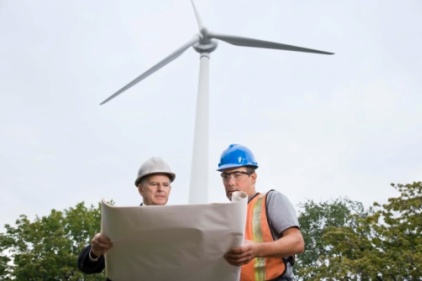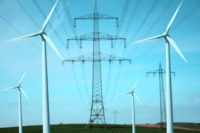 Workers who erect and maintain wind turbines can be exposed to fall hazards. Wind turbines vary in height, but can be more than 100 feet tall. Exposure to high winds may make work at high elevations even more hazardous. OSHA has different fall protection requirements for construction (installation of towers) and general industry (maintenance).
Workers who erect and maintain wind turbines can be exposed to fall hazards. Wind turbines vary in height, but can be more than 100 feet tall. Exposure to high winds may make work at high elevations even more hazardous. OSHA has different fall protection requirements for construction (installation of towers) and general industry (maintenance).
During installation, workers may need to access individual turbine sections to weld/fit individual sections together, run electrical or other lines, and install/test equipment - often at heights greater than 100 feet. Construction workers on wind farms when exposed to fall distances of 6 feetor more must be protected from falls by using one of the following methods:
Maintenance work involving wind turbines is generally considered to fall under OSHA’s general industry standards. Such workers when exposed to fall hazards of 4 feetor more must be protected by a standard railing. If such a railing is not possible then the workers must be protected from falls through the use of personal protective equipmentsuch as a personal fall arrest system or a safety net.
Additionally, general industry workers engaged in maintenance of the wind turbines may have to climb up the turbine towers using fixed ladders. While climbing a fixed ladder (exceeding 20 feet in length) on these towers, a ladder equipped with a cage or well must have a landing platform every 30 feet; a ladder not so equipped must have a landing platform every 20 feet. See 29 CFR 1910.27(d)(2). Ladder safety devices may be used on wind tower ladders over 20 feet in unbroken length in lieu of cage protection. No landing platform is required in these cases. See 29 CFR 1910.27(d)(5).
Some additional resources on fall protection are provided below:


